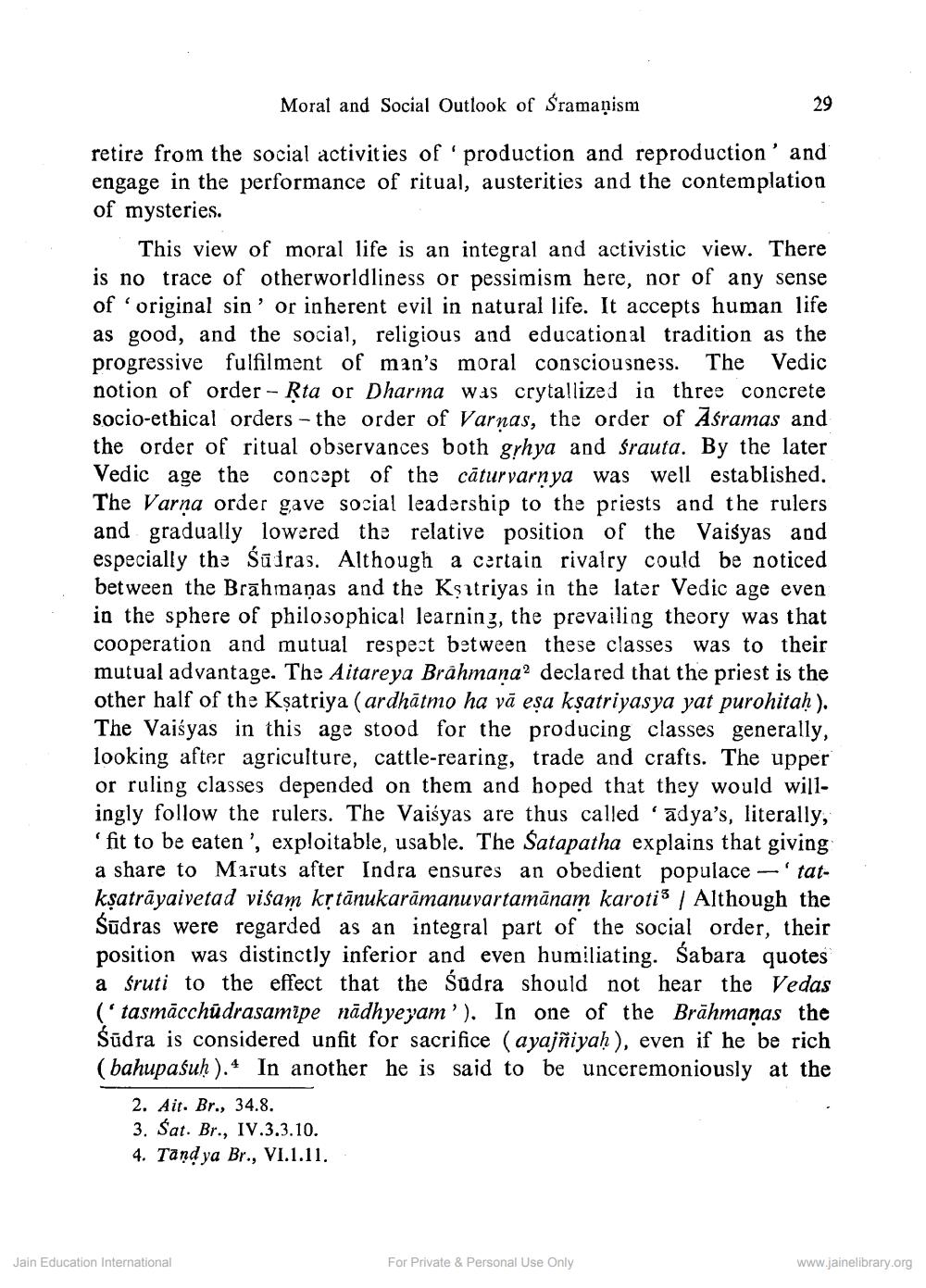________________
Moral and Social Outlook of Šramaņism
29
retire from the social activities of production and reproduction' and engage in the performance of ritual, austerities and the contemplation of mysteries.
This view of moral life is an integral and activistic view. There is no trace of otherworldliness or pessimism here, nor of any sense of original sin’ or inherent evil in natural life. It accepts human life as good, and the social, religious and educational tradition as the progressive fulfilment of man's moral consciousness. The Vedic notion of order - Rta or Dharma was crytallized in three concrete socio-ethical orders - the order of Varnas, the order of Aśramas and the order of ritual observances both grhya and srauta. By the later Vedic age the concept of the cãturvarnya was well established. The Varna order gave social leadership to the priests and the rulers and gradually lowered the relative position of the Vaisyas and especially the Śūiras. Although a certain rivalry could be noticed between the Brahmaṇas and the Ksatriyas in the later Vedic age even in the sphere of philosophical learning, the prevailing theory was that cooperation and mutual respect between these classes was to their mutual advantage. The Aitareya Brahmana? declared that the priest is the other half of the Ksatriya ( ardhātmo ha vā esa ksatriyasya yat purohitah). The Vaisyas in this age stood for the producing classes generally, looking after agriculture, cattle-rearing, trade and crafts. The upper or ruling classes depended on them and hoped that they would willingly follow the rulers. The Vaisyas are thus called 'adya’s, literally, 'fit to be eaten', exploitable, usable. The Satapatha explains that giving a share to Maruts after Indra ensures an obedient populace --' tatkşatrāyaivetad visam krtānukarāmanuvartamānam karotis | Although the Sūdras were regarded as an integral part of the social order, their position was distinctly inferior and even humiliating. Sabara quotes a sruti to the effect that the sūdra should not hear the Vedas ('tasmācchūdrasamipe nādhyeyam'). In one of the Brāhmanas the Śūdra is considered unfit for sacrifice (ayajñiyah), even if he be rich (bahupaśuḥ).4 In another he is said to be unceremoniously at the
2. Ait. Br., 34.8. 3. Sat. Br., IV.3.3.10. 4. Tand ya Br., VI.1.11.
Jain Education International
For Private & Personal Use Only
www.jainelibrary.org




